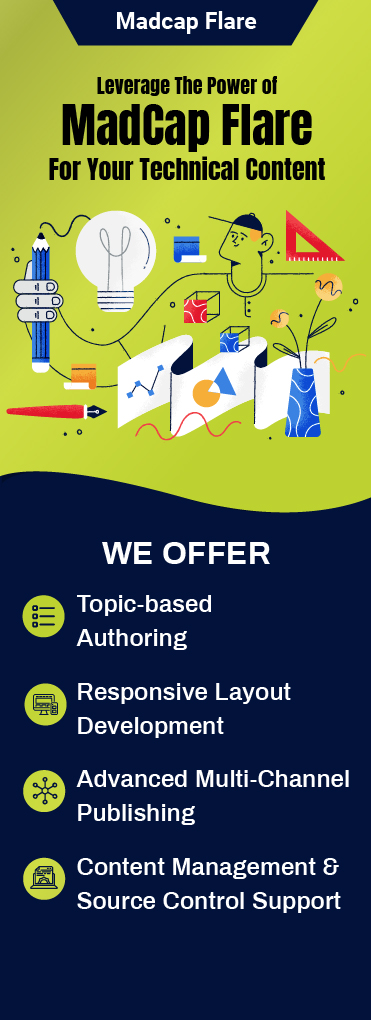Let’s face it – technical documentation is no walk in the park. Deadlines move fast. Features change. Amidst this, keeping content consistent across teams is hard.
AI tools for content creation step in like an extra set of hands—ones that don’t tire, miss details, or need coffee breaks. These tools have come a long way. What once helped with just grammar checks now supports content planning, drafting, editing, and even optimization.
No wonder teams are turning to AI tools in a big way. In 2025, a whopping 90% of content marketers plan to use AI to support their content efforts — up from just 65% in 2023. 1 And, the most amazing part? This surge isn’t limited to any one sector; it spans industries, from B2B to B2C.
In this blog post, we’ll break down how to use AI effectively across the content lifecycle – so your workflow becomes smarter, faster, and more efficient.
How AI Supports Every Step of the Content Lifecycle
AI, or should we say, your new practical assistant, adds even more speed and structure to every stage of the content lifecycle:

1. Content Ideation and Outlining
Staring at a blank screen is no one’s favorite task. Content generation tools help jumpstart the process by generating tailored topic outlines based on your audience and product focus. It also helps organize the flow of information, so your content is coherent and aligned from the get-go.
2. Automated Content Generation
Need a rough first draft? AI’s got you. Whether it’s standard product descriptions, FAQs, or intros, content generation tools can fill in the basics using prompts or templates. It’s a great way to save time on routine sections and focus your energy where it matters.
3. Drafting Assistance and Refinement
Clarity and tone matter, especially in technical content. AI-powered writing assistants suggest better phrasing, clean up grammar, and keep a consistent voice across your documentation, even when multiple team members are involved.
4. Knowledge Retrieval and Research
Digging through internal wikis or technical specs can slow you down. With AI, you can pull up definitions, competitive insights, or feature data in seconds. It acts like a smart research buddy—one that’s fast and doesn’t need training.
5. Image and Media Enhancement
Visuals are a big part of modern documentation. AI can auto-generate simple diagrams, suggest alt text, and tag images appropriately. It makes your content more engaging and inclusive, without the extra design work.
6. SEO and Content Optimization
Good documentation should be easy to find. AI helps sort titles, summaries, and keywords based on user intent and search behavior. That means better discoverability, whether it’s on your site or through search engines.
7. Translation and Localization Support
Need to publish content in multiple languages? AI translation tools dramatically speed up turnaround time while keeping the tone and structure intact. Many of these tools also preserve formatting and layout, making it easier to maintain consistency across localized versions, without needing extensive manual adjustments.
8. Content Organization and Management
AI also helps with the behind-the-scenes work. Auto-tagging, content categorization, and smart reuse recommendations improve how you store, retrieve, and repurpose information.
Where AI Can Trip You Up (and How to Stay Steady)
31% of marketers say accuracy and quality are still concerns. 2 That’s a good reminder to see where things can go wrong (and how to keep your documentation on track).

1. Over-Relying on AI-Generated Drafts
It’s tempting to let AI take over first drafts, but skipping SME (subject matter expert) review can result in glossed-over nuances or incorrect assumptions. Make AI your assistant, not your author.
2. Losing Technical Depth
AI often aims for clarity and brevity. That’s great—until it simplifies critical concepts too far. Always double-check that your final output meets the technical accuracy your audience expects.
3. Overlooking Data Security Risks
Using cloud-based AI tools for content creation with proprietary or sensitive information? That’s risky. Make sure you understand the data handling policies of any tool you use, and mask or anonymize inputs when possible.
4. Misusing SEO
AI writing assistants can optimize for search, however, they can also over-optimize. Keyword stuffing or robotic phrasing harms readability. Use SEO tools to guide your structure, not dictate your style.
How to Use AI Effectively in Technical Documentation
AI can do a lot—but only if you guide it right. Let’s talk about how to use it smartly in your documentation workflow.

1. Keep a Human-in-the-Loop for Validation
AI tools generate and refine content, but they’re not perfect yet. Sure, AI can help create an excellent first draft, but a human touch is essential for refining tone, ensuring technical accuracy, and making sure everything aligns with your brand.
2. Build and Maintain Style Guides and Glossaries
It’s annoying when AI uses a term that doesn’t fit, agree? We’ve all been there. That’s why keeping an up-to-date style guide and glossary is key. By doing this, you’ll give AI clear instructions on your preferred terminology, tone, and writing style. Result? Consistent and on-brand results.
3. Work with Modular Content
Here’s where it gets exciting: Modular Content! Think of it as breaking down your documentation into bite-sized, reusable chunks. Some tools help you create individual topics or snippets for AI to understand the context and give faster updates down the road. When you update one part of your documentation, the rest remains intact.
4. Audit for Bias, Hallucination, and Tone Mismatches
AI-generated content is powerful, but it’s not without its quirks. Sometimes, AI may introduce bias, or worse, hallucinate—creating facts that aren’t quite right. That’s why you should always audit the output. Be on the lookout for any errors or inconsistencies. And don’t forget to double-check the tone—AI might get the facts right, but miss the mark on how the content feels.
5. Use Version Control for Pre- and Post-AI Versions
Curious how AI impacts your content? That’s where version control helps. It lets you compare the original document with the AI-edited version and evaluate the changes. So you can track improvements, and roll back if needed—like a safety net for your edits.
It Isn’t AI vs. Writers – It’s AI With Writers
The future of technical documentation isn’t a battle between humans and machines—it’s a partnership. AI can speed up routine tasks, help maintain consistency, and suggest better ways to structure content. But it still needs human oversight to get the context, tone, and accuracy right. The key is finding the right balance and the right tools to make AI work with you.
Statistics References:













